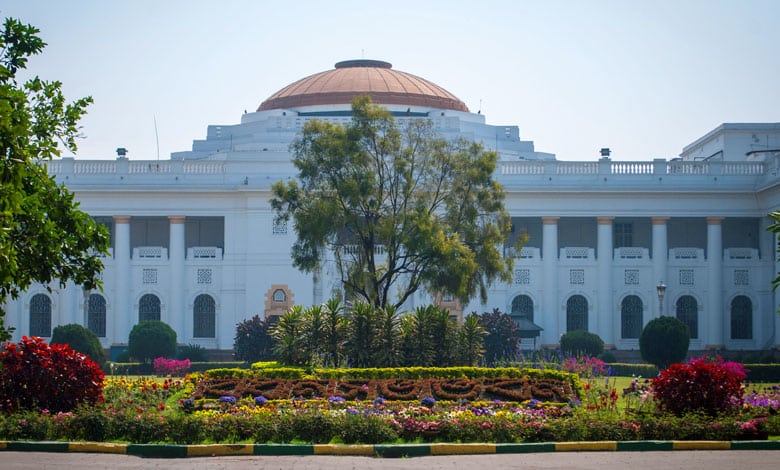West Bengal Budget 2025-26: Rising Debt, Revenue Concerns, and Expenditure Management Challenges
"West Bengal Budget 2025-26 highlights rising debt, revenue concerns, and expenditure management challenges. Explore key fiscal issues, NITI Aayog rankings, and government strategies for economic stability."

Kolkata: As West Bengal prepares for its budget presentation for the financial year 2025-26, the state faces significant financial challenges, including mounting debt, revenue constraints, and concerns over expenditure management.
On Wednesday, West Bengal Minister of State for Finance (Independent Charge) Chandrima Bhattacharya will present the state budget in the Assembly, addressing these pressing economic issues.
Table of Contents
West Bengal’s Debt Crisis: A Growing Concern
According to data from the state finance department, West Bengal’s total accumulated debt is expected to rise to Rs 6,93,231.66 crore by March 31, 2025. This marks a significant increase from Rs 6,30,783.50 crore as of March 31, 2024.
To put this into perspective, at the end of the financial year 2010-11—the final year of the previous Left Front regime—the state’s total accumulated debt stood at just Rs 1.90 lakh crore. The exponential rise in debt over the past decade raises concerns about the state’s fiscal health.
Reasons Behind West Bengal’s Rising Debt
Economists highlight two key factors contributing to the mounting debt:
- Escalating Revenue Expenditures: Government spending has surged over the years, contributing to the rise in total liabilities.
- Limited Revenue Generation: The state’s own tax revenue avenues remain constrained, failing to keep up with rising expenditures.
Without strategic fiscal reforms, effective debt management appears increasingly difficult.
NITI Aayog Report Highlights Debt Management Issues
West Bengal’s fiscal management challenges were underlined in the NITI Aayog’s Fiscal Health Index 2025. The report evaluated the fiscal health of 18 states, ranking West Bengal 16th out of 18.
One of the key concerns raised in the report was the interest payment burden on the state. According to the data:
- Interest payments account for 20.47% of the total revenue receipts, severely limiting the government’s ability to allocate funds for developmental projects.
- While West Bengal’s debt-to-GSDP ratio improved from 40.7% in 2010-11 to 35.7% in 2018-19, the state continues to struggle with high interest payments on existing loans.
Revenue Challenges: Overdependence on State Excise
One of the most pressing concerns for West Bengal’s financial health is its limited sources of tax revenue. The state’s revenue growth remains sluggish, with a projected overall tax revenue growth of just 9% by March 31, 2025. However, a concerning trend has emerged:
- State excise tax, a key component of the state’s revenue, is projected to grow by 16% in the same period.
- Reliance on excise tax as a primary revenue source is unhealthy, given that it is just one of the 12 revenue components.
The NITI Aayog report also pointed out that:
- West Bengal’s State Goods and Services Tax (SGST) collections have been the primary contributor to tax revenue, growing at an average rate of 6.6% annually over the past five years.
- Non-tax revenue has declined, further straining the state’s financial resources.
- The state’s reliance on grants-in-aid from the central government increased from 17.6% in 2018-19 to 19.6% in 2022-23.
Expenditure Management: A Critical Concern
Apart from revenue challenges, West Bengal’s expenditure management has come under scrutiny. The government’s spending pattern raises concerns over the quality of expenditure rather than just the quantity.
- Related Article | West Bengal Budget Session 2025 Begins Amid Signs of Improved Raj Bhavan
Decline in Infrastructure Spending
According to the NITI Aayog report:
- West Bengal’s spending on physical infrastructure has declined from 5.3% of total expenditure in 2018-19 to 3% in 2022-23. This figure is lower than the national average, indicating insufficient investment in infrastructure.
- The proportion of capital expenditure (funds spent on long-term development projects) has dropped from 12.2% in 2018-19 to 8.3% in 2022-23, again below the national average.
Social Sector Spending: Below National Average
While West Bengal’s social expenditure (on health, education, and welfare programs) accounted for 28.2% of total spending, it remains lower than the national average. This suggests that while the state is prioritizing welfare spending, it may not be sufficient compared to national benchmarks.
